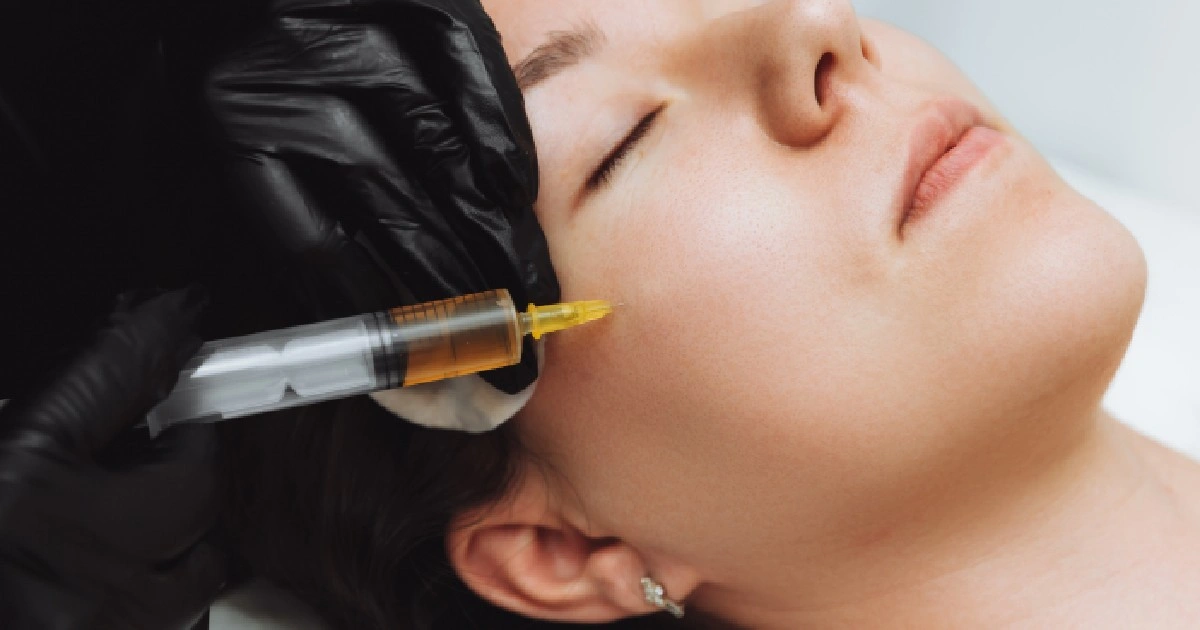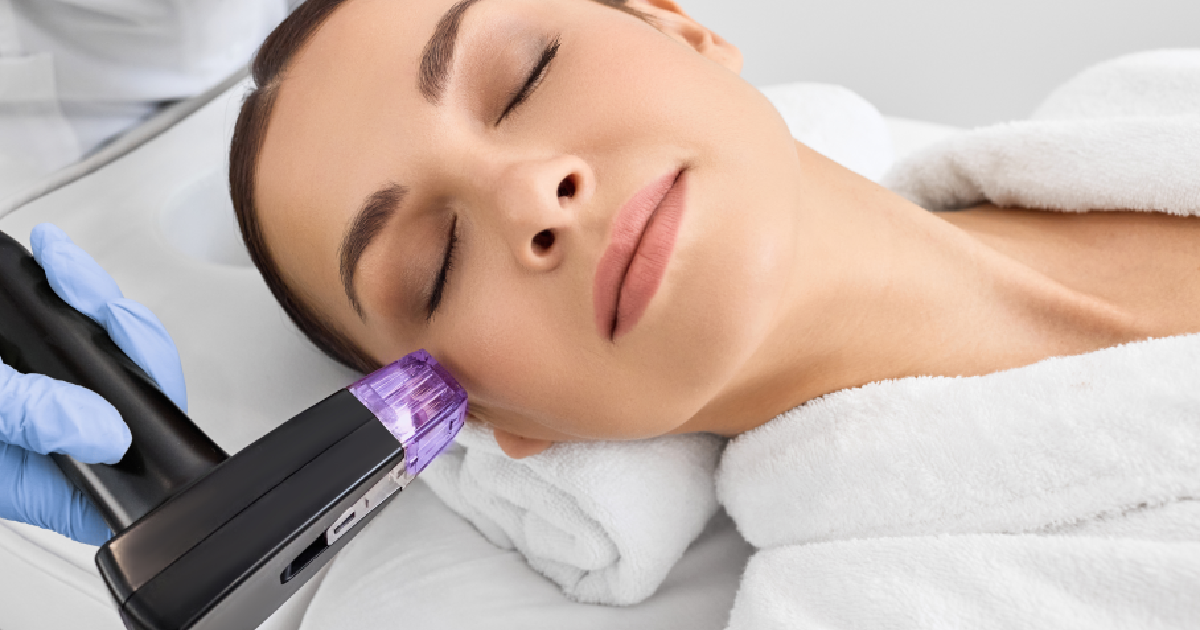The relentless march of time leaves marks on every aspect of our lives, not least of which is our skin. Because of that, many people seek to reduce their wrinkles and fine lines even though they are an inevitable part of aging. Thanks to the immense popularity of BOTOX® and Dysport® over the years, they have become go-to choices for those seeking a youthful glow.
What is BOTOX®?
BOTOX® Cosmetic is the brand name of a toxin produced by the bacterium Clostridium botulinum. In more significant amounts, this toxin can cause muscle paralysis known as botulism, often associated with food poisoning. However, in its cosmetic application, BOTOX® uses tiny, safe doses to reduce or eliminate facial lines and wrinkles temporarily.
BOTOX® inhibits the nerve signals that reach the muscles when injected into them. Without these signals, the power cannot contract, which relaxes and softens wrinkles. It is most frequently applied on frown lines, crow’s feet, and forehead lines.
The procedure involves a few tiny injections, takes only a few minutes, and requires no anesthesia, while pain is usually minimal, often described as a pinprick sensation. The full effects typically take three to seven days to appear, and the results persist generally for three to six months. The lines and wrinkles will emerge as muscle activity gradually increases, but they will typically be less prominent because the muscles have been educated to relax.
What Makes Dysport® Different?
Dysport® has made a name for itself in the world of anti-aging injectables, offering distinctive characteristics that differentiate it from others, like BOTOX®. One of its standout features is its rapid onset, with some users witnessing results within 2-3 days post-injection.
Similarly, Dysport® uniquely diffuses in the skin, potentially making it suitable for treating broader areas, such as the forehead. However, this requires precise administration to prevent unintended effects.
The formulation of Dysport® differs slightly from BOTOX®, even though both are derived from the botulinum toxin type A. This difference in protein load around the active molecule might result in subtle variations in results, onset, and how long effects last. Additionally, the unit measurement for Dysport® isn’t the same as that for BOTOX®, emphasizing the need for practitioners to be acutely aware of dosing differences.
Choosing Between the Two
In anti-aging injectables, the choice between BOTOX® and Dysport® might seem overwhelming. Although both products have a history of success, they appeal to various requirements and tastes. Here’s a deep dive into the main factors to consider when making your decision:
- Treatment Area: BOTOX® is renowned for its precision. If you’re looking to target specific areas with meticulous detail, such as crow’s feet or lines between the eyebrows, BOTOX® might be preferable. On the other hand, due to its ability to spread slightly more, Dysport® can be particularly effective for larger areas, such as expansive forehead wrinkles.
- Onset of Results: Time can often be of the essence. Dysport® is sometimes favored by those eager to see quick results, as it may show effects in as little as 2-3 days post-injection. In contrast, BOTOX® might take up to 5 days to reveal noticeable changes.
- Duration of Results: Generally, both BOTOX® and Dysport® last around 3-4 months, but this duration can vary among individuals. Factors such as metabolism speed, the treated area’s muscle activity, and the dose administered can influence longevity. It’s crucial to discuss expected timelines with your practitioner.
- Cost: Financial considerations play a role in most aesthetic decisions. The cost of each treatment can fluctuate based on geographic location, the expertise of the provider, and the number of units required. It’s always advisable to seek quotes and explore package deals or loyalty programs.
- Personal Experience: If you’ve tried one of these treatments in the past, your personal experience might guide your future choices. For some, a past positive experience with one product naturally leads to its continued use. Curiosity or the pursuit of better results might prompt a switch for others.
- Professional Recommendation: A consultation with a seasoned dermatologist or aesthetician can be invaluable. These experts can analyze your facial anatomy, understand your desired outcomes, and recommend the product they believe will serve you best.
While their differences are nuanced, they can be significant for individuals pursuing specific results. Reflect on what matters most to you, seek professional advice, and embark on your journey to rejuvenated skin with confidence.
Safety and Considerations
When contemplating anti-aging injectables like BOTOX® and Dysport®, being informed about the safety aspects and various considerations is paramount. Here’s a comprehensive overview:
- FDA Approval: Both BOTOX® and Dysport® have earned the Food and Drug Administration’s (FDA) stamp of approval for cosmetic use. It means they have undergone rigorous testing and have been deemed safe for reducing wrinkles when administered by trained professionals.
- Side Effects: Both injectables commonly cause moderate discomfort or bruising where they are injected, headaches, and brief drooping of the eyelids. Most side effects are transient and subside within a few days. Less commonly, there can be allergic reactions, which warrant immediate medical attention.
- Previous Medical Conditions: Individuals with certain neuromuscular disorders, such as ALS, myasthenia gravis, or Lambert-Eaton syndrome, are advised to avoid these treatments due to the potential worsening of symptoms.
- Pregnancy and Nursing: The safety of these injectables hasn’t been fully established for pregnant or nursing mothers. Avoiding such treatments during these times as a precautionary measure is recommended.
- Qualified Practitioner: Perhaps the most crucial consideration is the choice of practitioner. Ensure you’re being treated by a board-certified dermatologist, plastic surgeon, or a highly trained and certified aesthetic nurse specialist. An expert’s skill and experience dramatically impact the outcome and safety of the procedure.
- Authentic Products: Be wary of suspiciously low-priced treatments. Counterfeit products, although rare, can be hazardous. Always receive treatments in reputable clinics that source their products directly from genuine manufacturers.
- Post-Treatment Care: For at least 24 hours following either treatment, it is preferable to refrain from rubbing or massaging the treated region. It prevents the product from spreading to unintended areas. Additionally, some professionals recommend refraining from strenuous exercise for a day post-treatment.
- Regular Monitoring: Regular follow-ups with your provider can ensure the treatment’s longevity and address concerns. It’s common to require touch-ups or dose adjustments based on individual responses.
While BOTOX® and Dysport® are considered safe when administered by experienced professionals, you must be aware of potential risks and prioritize your health and safety. Before any procedure, arm yourself with knowledge, ask questions, and choose a trusted provider.
The Bottom Line
Both BOTOX® and Dysport® offer a ticket to a refreshed and youthful appearance. At Mason Aesthetics and Wellness, we’re proud to provide both BOTOX® and Dysport®, the leading-edge neurotoxins designed to combat fine lines and wrinkles. Dive into the future of age-defying treatments with BOTOX® and Dysport®; the pinnacle of injectable excellence awaits you!




